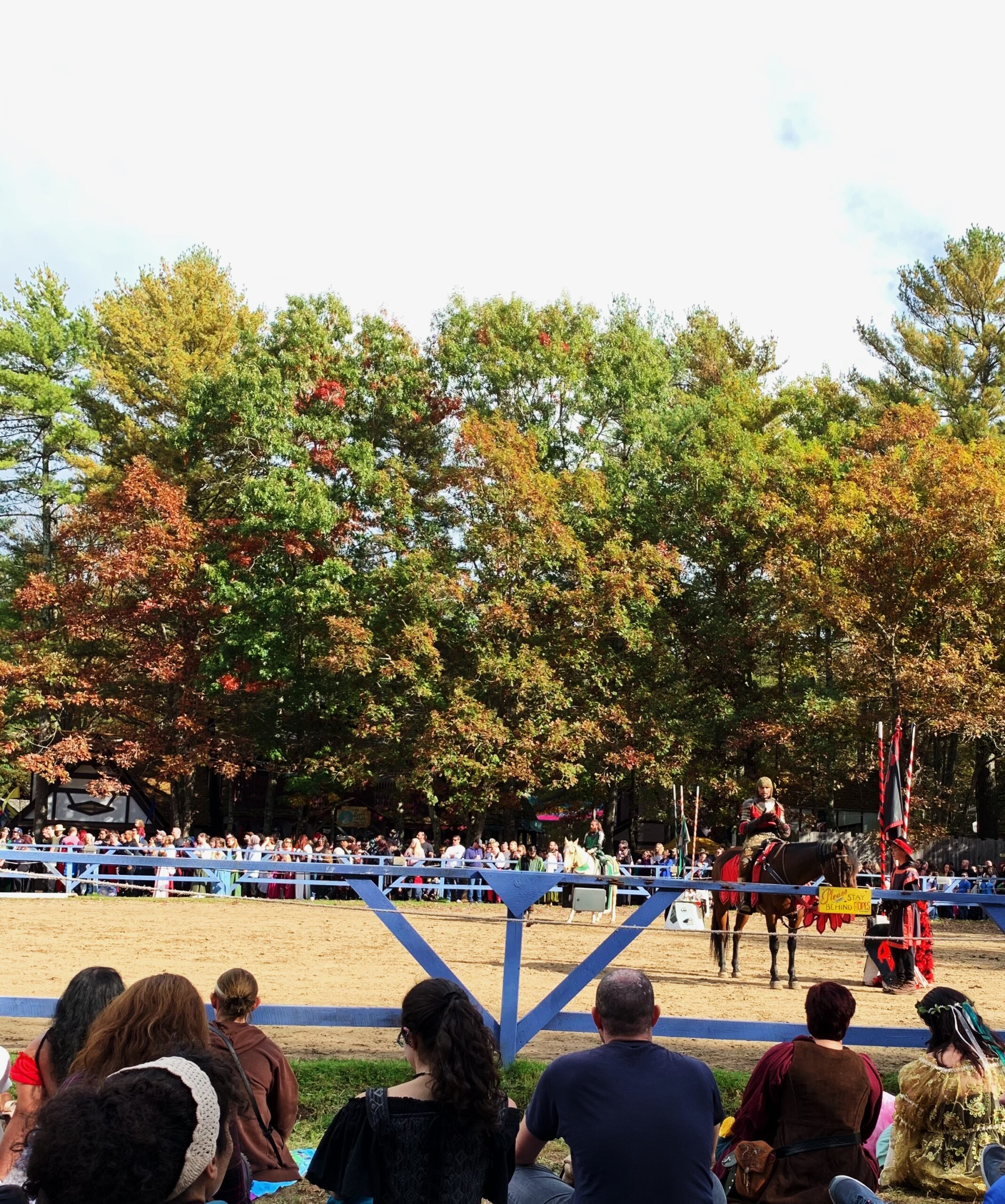The Tournament at King Richard’s Faire
By Megan Brodeur.
Immersing Oneself Into the Medieval Spirit
On a beautiful Autumn Sunday, a few of my classmates and I took a trip to King Richard’s Faire and enjoyed a semi-authentic Medieval experience. Although they couldn’t turn back the clocks to the fifteenth century or transport us across the Atlantic, the day was still filled with inspiration from Medieval Europe. Among many performances and activities was the Tournament. Due to the lively atmosphere and top-notch entertainment, we felt compelled to spend a significant amount of time there. Participating in the Tournament were four knights. It was refreshing and inspiring to see a woman be one of these four. This is one instance where not being entirely authentic benefited the event. It highlights how unlikely it would be for a woman to be given this opportunity if we truly had turned back time to the Medieval Era. However, that is one of many outdated aspects of Medieval culture that has improved in our contemporary times. Of course, it still needs more improvement. It would have been nice to see more female representation, but the female knight who did participate was phenomenal in her performance. She excelled in every category, including the joust, test of skill, and on-foot combat.
In addition to the female knight, they also identified the Queen of Love and Beauty. In Sir Walter Scott’s Ivanhoe, the title is bestowed by the winner of the Tournament. The two beautiful women, Rowena and Rebecca are among some of those nominated for the honor. This scene highlights antisemitism in Medieval England, which was another awful aspect of the Medieval era that was left out of this performance at King Richard’s Faire. Because Rebecca is a Jewish Woman, her nomination by Prince John is faced with mass scrutiny. To appease the bigots, Ivanhoe does not bestow upon her the title, despite her exceptional character and undeniable loveliness.

One aspect of Medieval culture that the performers incorporated well was creating an atmosphere of competition by rousing the crowd. The audience was divided into four quadrants. One or more Medieval performers were given a quadrant and told their section of the crowd who they should be supporting in the Tournament. This greatly enhanced the experience and helped immerse us deeper into the Medieval spirit. Our corner of the audience was cheering for a bloodthirsty knight from Spain. This highlighted the Medieval desire for senseless fighting, which is implicit in the very foundation of a Tournament.





